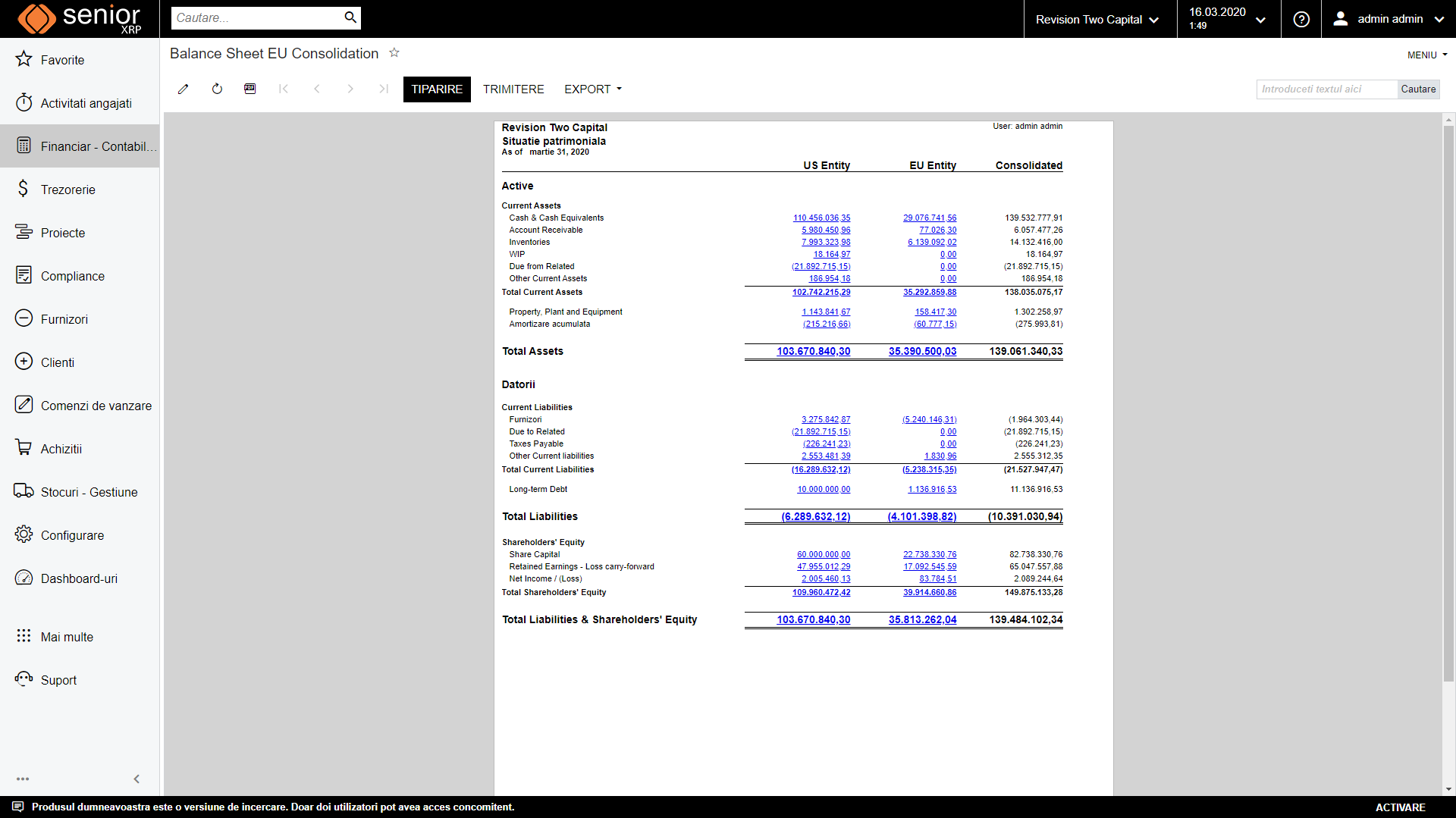Reasons to choose the Financial Consolidation module from SeniorXRP?
The Financial Consolidation module in SeniorXRP allows knowing the performance of a company, reported at group level, by quickly configuring the data to be consolidated, as well as the exact way in which they will be consolidated.
The system component makes it possible to easily consolidate the data from all branches/business places of the organization in order to obtain a clear image of the entire business.
Thus, functionality becomes essential in centralized analysis and in improving decision-making processes, both at the level of each branch and at the level of the parent company.
3-step consolidation with SeniorXRP
1. Consolidation configuration
Before the actual start of the consolidation process, make sure that both the parent company and the subsidiaries have the same financial structure and the same chart of accounts.
2. Data preparation
At the level of each entity, the preparation of data begins with the drafting of the trial balance, specifically, assuring data accuracy, as well as the closing of the financial years for all units included in the consolidation process.
3. Data import
The import of data from each entity by the parent company is performed periodically, at pre-set time intervals, so as to respond to the needs of the company as efficiently as possible.
Check out how SeniorXRP can fit your business model!
Choose the solution that successfully meets the needs of people in all departments, from HR and Finance to Procurement, Sales, B2B, or Logistics.
Important facts to know about the Financial Consolidation process:
- The consolidated data is grouped by financial years, therefore they must be defined in a similar manner for both the subsidiaries and the parent company. Otherwise, the consolidated data will be inaccurate.
- If the data at a particular business place use a currency other than that of the parent company, it is necessary to be converted into the base currency of the parent company before import.
- Before consolidating data, it is important to review the hierarchy of companies whose data will be consolidated and to determine which is the parent company and its business places.
- The structure of the synthetic and analytical chart of accounts of the subsidiaries must be similar or even more detailed than that of the parent company. If, for example, the parent company has a more detailed structure of the analytical accounts, the data mapping will be faulty.
